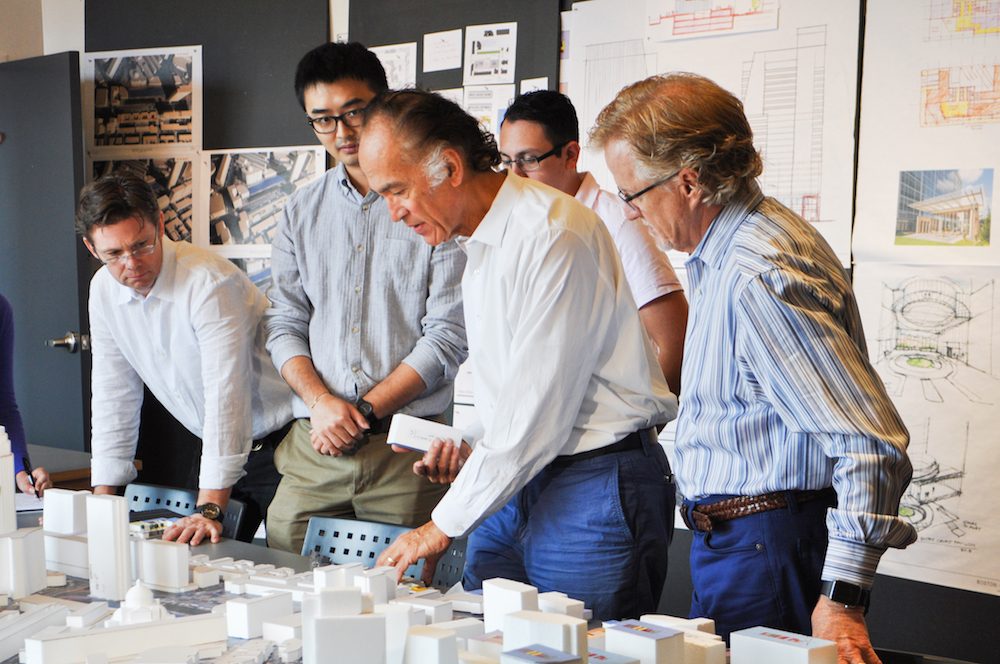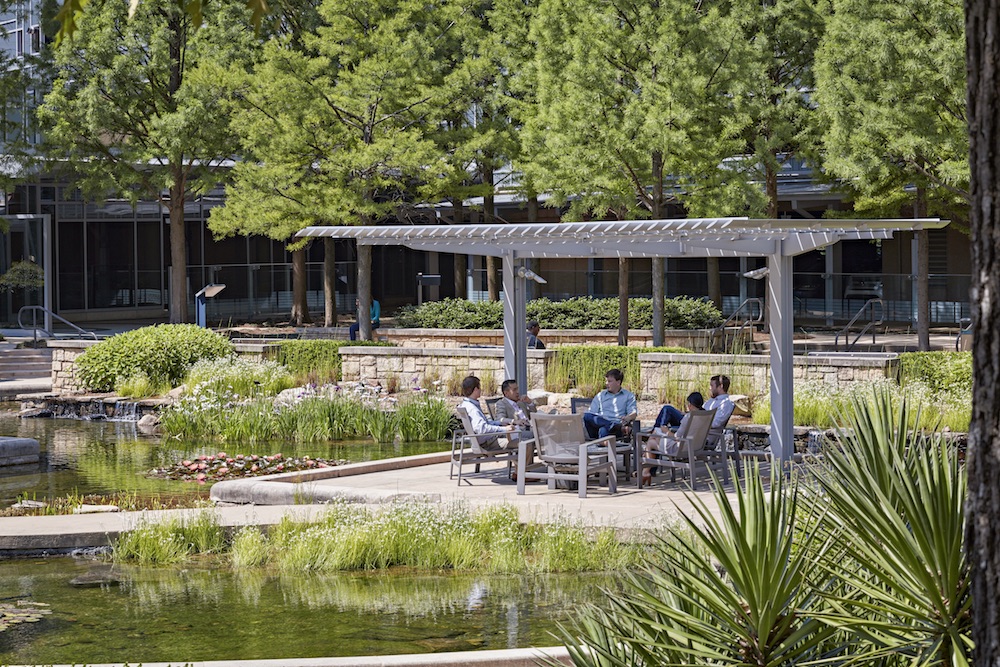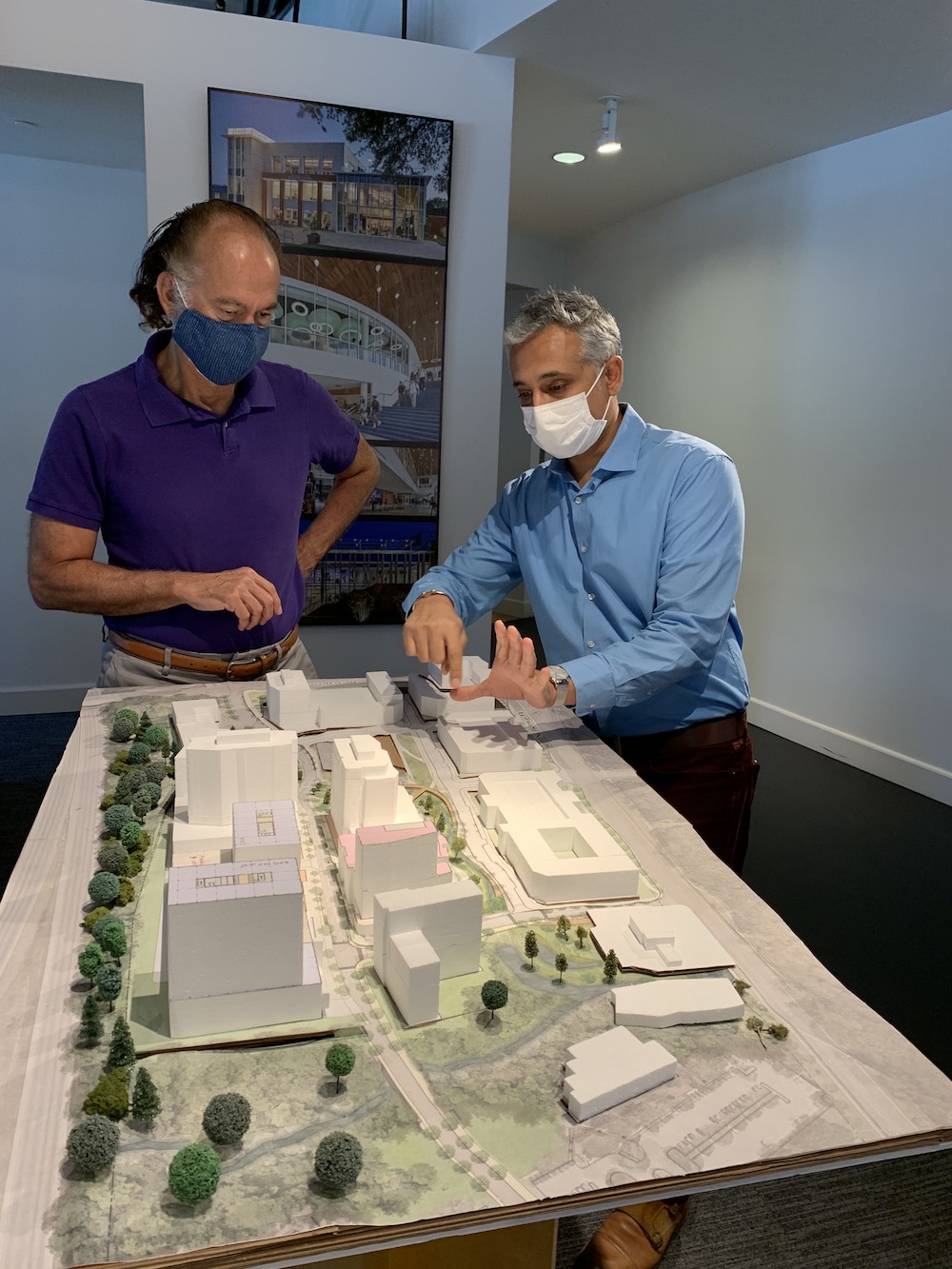Turan Duda and Jeffrey Paine share tips and ideas for creating a holistic workplace to ensure a successful return to the office.

Collectively our society is facing challenges on multiple fronts including social, political, economic, environmental and, with COVID-19, health and loss or comprise of our work routines. Everyone has made sacrifices to make work-from-home as effective as possible, but at what cost to holistic workplace synergies and culture? For creative and collaborative fields, much is at stake. The methods, processes and results of our work—and that of many other endeavors—are founded in collective, in-person interaction and sharing. With demand for collaborative office and alternative meeting spaces on the rise in all building types before the pandemic, we are not alone. Work-from-home isolation, despite robust virtual conferencing and other sharing platforms, has a true impact on our psyches and, subsequently, our creative process and ability to innovate. One of our clients surveyed all leaseholders of their office properties and found the majority of office workers want to come back to the workplace. People overwhelmingly prefer to work in an office, and the social aspect of physically being together will ultimately drive us back into shared spaces.

Transition Time
Many people are already accustomed to working remotely, but for others an essential aspect of the holistic workplace involves collaborating in person or meeting one-on-one to give and get feedback. While physical proximity will be an issue for the foreseeable future, as will masks as an effective tool for not passing the virus on to others, there are smart ways to come together. Our team is having small design sessions with distancing and masks required. We are also envisioning short, perhaps one-hour meetings in the office, and then folks heading out again. People with children at home because of school and daycare closures and those with preexisting conditions can continue to work from home for now. A two-week quarantine will follow any travel. These policies and others for returning to the office are geared to do more than protect staff from the virus—they provide peace of mind by communicating that staff health and the collective health of our firm are vital. No blanket transition strategy works for everyone. Law firms operate differently than startup tech companies. Thus how people work will be a huge factor in who goes back to work first. The process is a lot like testing the water to see if it’s safe—one step at a time

Culture is the New Touchstone
Humans have an innate desire to be connected with something bigger than themselves—it’s almost tribal. Again, any work has a social aspect. Virtual communications are no substitute for being together and the psychological benefits of shared effort. The best place to begin envisioning our future is with culture. Companies who have already nurtured a strong office culture, where people help one another, enjoy one another, and are adaptable and flexible in approaching work, are at an advantage as people come back together under new rules.
While apart, we have come up with ways to feel connected, whether through virtual Friday happy hours or by maintaining our regular all-staff meetings throughout the closure. Virtual conferencing has also presented opportunities for everybody to practice presenting their ideas, which increases our ability to celebrate together. Social media has proven invaluable in expressing and sharing culture internally from staff related milestones like work anniversaries to project achievements and highlights. Feed Your Mind Friday presentations start directed conversations that give us shared perspective on what’s going on in the world including social and health related topics. Still there’s something to be said for having a daily dose of walking around an office and seeing the work. When we re-emerge, we’ll immerse ourselves in visual reminders of the results of our culture with images and models of completed design projects and work we’re doing now. Similarly, many offices today have exhibit spaces. These can provide employees moments of reconnection with the company’s achievements and milestones.
Nurturing culture is important in any holistic workplace but takes active engagement from leadership. Leaders have to create venues, the opportunity and the time, for people to have impromptu conversations. Building collective knowledge is another cultural accelerant. Spatial design to advance learning can contribute to the process. For example, auditoriums and meeting rooms used to be enclosed, but even before the pandemic we were creating impromptu amphitheaters and meeting spots that allow new information to be less formally conveyed and incidental, unplanned learning to occur. Having a team talking about a project in a space where others not on the team can walk around and observe allows everyone opportunities to listen in if something catches their attention. Open spaces also break down barriers and help erode the divisiveness that is prevalent today. They can build our sense of community, with community being a great contributor to emotional, mental and physical health.

The Power of Choice
We believe one of the most critical factors in designing offices is providing options. Trends in office design over the past decade include multiple places to go about the day’s tasks within any workplace. Providing options for where staff work, for levels of privacy and for collaboration engenders a sense of comfort and control. In our studio today, a staff member can work at their desk or take their laptop to work in our café or on a lounge chair in the library. They can also take over a small conference room. For the foreseeable future, people might want to stay put more than in the past, to have their workstation be theirs, that they’ve wiped down and exclusively touched the keyboard and chair, but they’ll also take their disinfectant wipes to an open table and spread out.
Health and wellbeing used to be about going to a fitness club or doing yoga before or after work. Now it’s infused into the actual workplace—we’re thinking about our health and stress levels all the time. Getting up, moving around, going outside, changing the ergonomics of seating—these all can contribute to our sense of control and self-awareness and lower stress levels.
Work-From-Nature Spaces
Health experts say that being outside is safer than being inside. So today we’re clamoring for the sense of safety that comes from being outside or having access to fresh air. In the design industry, we’re fortunate that many conversations about our projects happen in the parking lot as we look at materials and colors. Integrating access to nature works on a number of levels to improve more than our health in the workplace such as providing opportunity to gain mental clarity, to have casual conversations and to be fit by walking around outside. Nature is also a great common denominator. The outdoors may well be the next ‘water cooler,’ with patios, plazas and gardens providing spots for ‘water cooler conversations’ in today’s office. With social divisiveness seemingly at an all-time high, nature allows us to sense all that is similar: our sense of smell, sight, hearing and the ability to feel shade, sun and a breeze.

Technology for Actual Versus Virtual
An unknown in the negotiation from virtual working to actually being together in the same space will be new technology. Innovation comes from two things. One is need; the second, more importantly, is desire. The fire to create something new, to change the world. Creative people across the world are looking at current challenges as a fabulous opportunity to change the buildings we’re designing for the future. Despite the images we see of people sitting at desks under glass bubbles, the solution won’t be an easy fix with hardware orbs or lines on the floor—there are technologies we haven’t thought of yet. Eighteen years ago, we placed a new invention into the Albert Eye Institute: antimicrobial carpeting. Additional focus on features like carpet that prevents the spread of disease are already happening, as is thinking on a reduction of the number of surfaces we touch. We may see new coatings or additives that, seconds after a surface is touched, germs and viruses left are destroyed. The primary downside of masks is that we can’t see each other smile—a smile is the greatest stress reducer. A mask that allows a person’s mouth to be visible is already in works. This will help tune us into our colleagues’ thoughts and feelings.
As we move forward, step by step, the lines between office and home will continue to blur. The holistic workplace of the future will potentially start functioning more like hospitality environments, where comfort is as crucial as efficiency and where every individual has the opportunity to feel relaxed, safe and part of a community. Design today is impacted by viruses, social injustice and the environment—all factors that unless we have a conversation in the office, we can’t help. As designers, we need to be thinking beyond our traditional role and become agents for change. How do architects facilitate positive change? Architecture is a powerful tool in altering human behavior. The buildings we design today are already redefining the behavior of the people who use them.

